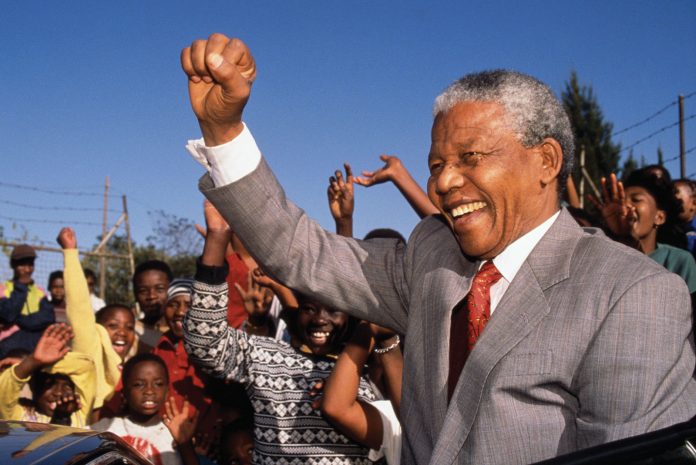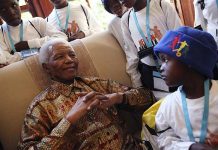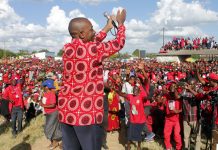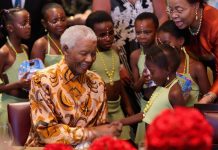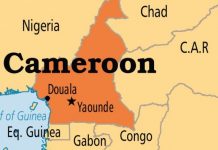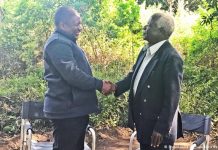Maputo:The founder of the Mozambican Liberation Front (Frelimo) Eduardo Mondlane participated in underground meetings organised by Nelson Mandela between 1945 and 1953, the author of a book that gathered the letters of the South African leader told Lusa.
The book ‘The Prison Letters of Nelson Mandela’ has now been published into a Portuguese translation. It includes the correspondence of the anti-apartheid fighter, collected by South African researcher Sahm Venter, who told Lusa about the links connecting the anti-colonial movements during the 20th century.
In the letter dated 1 December 1970, addressed to Sanna Tysie, the owner of Blue Lagoon, Mandela wrote in Afrikaans to ask whether the famous cafe-restaurant was still standing and to acknowledge the role played by this venue as “a meeting point that has kept together during the last 25 years (since 1945)” members of the resistance.
The restaurant, in Johannesburg’s CBD, was one of the meeting places among African leaders, Mandela recalled in the letter, addressed to the owner.
“Famous personalities such as Seretse Khama [1921-80, Botswana’s first post-independence president], Oliver Tambo, Eduardo Mondlane and Joshua Nkomo [1917-99, founding leader of the ZAPU, Zimbabwe African People’s Union, established in 1961], met assiduously there for supper and rest,” wrote Mandela in his letter sent from the then Robben Island prison off Cape Town, where he was imprisoned for 18 years (1964 to 1982).
South African researcher Sahm Venter collected 255 letters written from prison by Nelson Mandela in a book portraying the Nobel Peace Prize trajectory through four penitentiary institutions from August 5 of 1962 to February 11 of 1990, the day he was released. In an interview with Agência Lusa, Venter says that he believes that the meetings with Eduardo Mondlane (1920-69), held as underground activities and a decade before the founding of Frelimo (1962), point to a strong connection between the two fighters.
“It is very possible, because we do not have any other reference on this, but it would be interesting to know the content of these talks because in 1952 it is the beginning of the ANC (African National Congress) resistance campaign against the apartheid regime in South Africa and the trial of Mandela together with 19 other accused tajes place at the end of that year, and therefore it is during this period that we witness the unfolding of the great revolution, ” he explains.
The researcher recalls that in 1953, Walter Sisulu (Mandela’s contemporary in the founding of the ANC) had already visited China in search for support for the South African revolutionary cause, eight years before the start of the armed struggle in South Africa, in 1961.
And it is in this sense that one can read the letter sent by Mandela: “The years 1952-53 was perhaps the period when you [the owners of Blue Lagoon] made the most important contribution to the progress and happiness of our nation.”
Sahm Venter notes: “In his prison letters, Mandela gives considerable attention to detail and surprisingly gives mention to Eduardo Mondlane and Joshua Nkomo, as well as others, because it is obviously something he was trying to communicate without prison guards and state censorship noticing the message, but it portrays what Johannesburg and South Africa were like in those days”.
At that time, there were very few restaurants that black South Africans were allowed to enter, the researcher points out.
Places like the ‘Blue Lagoon’ where they dined, “were a preference for the elite, formed at that time by intellectuals and freedom fighters.”
The author further notes that in prison Nelson Mandela was not authorised to write to other political leaders of his day.
The death of Mozambican President Samora Machel on the 19th of October 1986, a victim of a plane crash in Mbuzini, received special attention from Mandela.
“The only record I found was when he was in Pollsmoor’s maximum security prison (March 1982-August 1982), Cape Town, where restrictions were less severe and Mandela could write, in a very special way, letters of condolence,” he explained.
On that occasion, “he wrote a letter to Graça Machel, on behalf of himself and his wife Winnie Mandela, lamenting the death” of Samora Machel, Sahm Venter told Lusa .
‘The Prison Letters of Nelson Mandela’, the title of the book published on Wednesday in South Africa by Blackwell and Ruth, gathered 255 letters written by “Madiba” as he is known in the country and region . These letters were organised by Sahm Venter, in a process that took about ten years.
According to the author, the letters constitute one-third of the collection of the Nelson Mandela Foundation, adding that “they are many more other [letters] whose whereabouts are unknown. ”
The collection is organised in chronological order and divided into the four prison institutions where Mandela was incarcerated, from August 5 1962 until the day of his release on the 11th February 1990: Pretoria Local Prison (1962-1963), Robben Island Prison (1964-1982), Pollsmoor Prison (1982-1988) and Victor Verster Prison (1988-1990).


